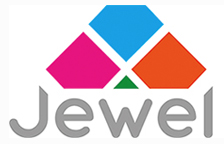The Power of Profiling
What is Profiling?
A personality profile is used to do an evaluation of a person’s personal attributes, values and life skills. There are two types:
Trait profiling such as Occupational Personality Questionnaire (OPQ) operates on the assumption that personality is made of a number of characteristics. The goal of these profiling tools are to match a person’s characteristics to a particular role and so are often used in recruitment and talent management assessment.
Type profiling some of which are the following: Myers-Briggs Type Indicator (MBTI), Strengths Deployment Inventory (SDI), DISC ,Talent Q, Emotions and Behaviours at Work (EBW), Mental toughness AQ48, Values-based Indicators of Motivation (VbIM) and Emotional Intelligence (Ei) – all used at Jewel Training – propose that people fall in well-defined categories. The goal of the profiling is to identify categories, share this information (via report and 121 feedback and coaching) and develop the person or team doing the profiling.
Interestingly the first personality profiling test was created in the 1920s by Raymond Cattell who created the 16 Personality Factor model (16PF). [Adapted from whatis.com author Margaret Rouse with thanks.]
Behavioural and personality models are widely used in organisations and have been used by philosophers, leaders, managers, coaches, facilitators and trainers for thousands of years to help understand and explain human behaviour, relationships, communication and personality types. [Adapted from Businessballs.com with thanks.]
How to Use Profiling
Favoured by HR and recruiters, profiling can be used within recruitment, however, it is more commonly used for personal development. Jewel Training use it in coaching, communication and relationship workshops, team building, self awareness development, talent identification and to help people relate to values and culture in an organisation.
What Profile?
At Jewel Training, we have licenced practitioners who can utilise profiling tools in training, coaching, team building and business development. We use Strength Deployment Inventory (SDI), Myers-Briggs Type Indicator (MBTI), DISC (Thomas International), Talent Q, Emotions & Behaviours at Work (EBW), Emotional Intelligence (Ei), Mental Toughness AQ48 and Values-based Indicators of Motivation (VbIM), however there are lots of other profiling tools available too.
Profiling tools need a ‘So what?’ outcome. It can be for self development, developing strategies for L&D or talent management, increasing communication, creating a business culture that reflects values and behaviours needed in a company, amongst many. For example, with the SDI we use it to understand personal behaviour, create culture, develop common language, build relationships, help people understand their own motivational values and those of others and understand what triggers create conflict in them and how others can support them when this occurs.
For more information about profiling look at British Psychological Society (BPS) website.
The Power of Profiling
If used correctly, profiling can be very powerful. Here’s are three tips to help you get the most from profiling:
Tip 1: Select a profiling tool that relating to the outcome you want, for example, if you want to breakdown ‘silo’ mentality in your company then using the SDI is a great tool to increase communication, team build and get people to support and understand each other better. If you need a tool to understand how you deal with stress and pressure and know how to personally develop and build resilience at work then the Mental Toughness AQ48 tool is for you. Dealing with conflict and demotivation in your company, then try MBTI. If you are a business owner and wants to understand yourself and staff behaviour then DISC is great for this.
Tip 2: To apply use a trained and licenced practitioner to carry out the profiling with you. Yes, it is a little more expensive, however, licenced practitioners have excellent knowledge and skills in how to use the right profiling tool. They understand the research and statistics about the reports and terms. They also know how to give clear feedback and the ‘So what?’ based on the profiling reports that are generated. They can interpret reports and facilitate effective use of tools so that you get the most from them.
Tip 3: To ensure you get value for money from profiling tools you need to integrate them into coaching and training programmes, talent management, business strategy, learning and development plans or even in qualifications (Jewel uses profiling tools within some of our ILM Level 3-7 Leadership and Management programmes). As they cost money to use always check out the validity of the profiling tool (i.e. research and authenticity). Plus ensure that the person who will implement the profiling tool for you is fully trained and licenced to use the tool. Matching the right profiling tool to your outcomes will be an effective way to get results and give you Return on Investment. They add more interest in development, can provide excellent focused development plans and get staff to do something different as a result of the feedback provided through the profiling tool. They help to understand human behaviour and develop self awareness and can create the culture that you want.
If you want to know how we at Jewel use profiling within our learning and development for people, team and businesses please contact us.

